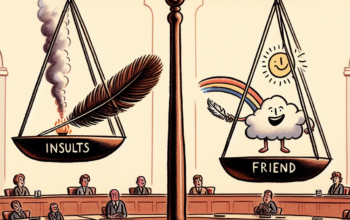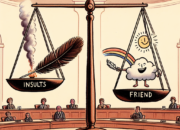Introduction
The filibuster has long been a subject of contentious debate within the United States Senate, with its effectiveness frequently questioned in today’s polarized political landscape. Assessing the effectiveness of the filibuster in the Senate requires a keen understanding of its historical context, operational mechanics, and contemporary implications. As we delve deeper into the intricacies of this procedural maneuver, it becomes evident that the filibuster serves as both a shield for the minority and a barrier to expedited legislative progress. This article provides an in-depth examination of the filibuster, with a focus on its effectiveness as we navigate the complexities of 2025’s legislative environment.
Understanding the Filibuster: History and Mechanism
The filibuster’s origins can be traced back to the early 19th century, initially utilized as a tool to prolong debate and prevent the majority from pushing through legislation hastily. Unlike House rules, which limit debate, the Senate’s tradition allows for unrestricted discussion. This unique feature means that, unless 60 senators vote to invoke cloture and end the debate, a senator can speak for as long as they wish. Over the years, the filibuster has evolved significantly, shifting from a tool employed primarily by a few to a more commonplace strategy used by both parties to voice dissent and stall legislation.
In recent years, particularly with the hyper-partisanship witnessed in the 2020s, the filibuster’s role has come under increased scrutiny. Opponents argue that its current use undermines democratic processes by allowing a minority to impose their will over the majority’s agenda. Proponents counter that the filibuster ensures that diverse viewpoints are considered in governance, especially on contentious issues requiring broader consensus. This duality creates a challenging landscape for lawmakers as they assess the effectiveness of the filibuster in a legislative environment characterized by extreme divisions.
The Filibuster in Contemporary Politics
As of 2025, many Democrats and Republicans are reassessing the filibuster’s effectiveness in the wake of stalled legislation on critical issues such as climate change, healthcare reform, and voting rights. The Democratic Party, in particular, has expressed frustration over their inability to pass key proposals despite having the majority, attributing this gridlock to the filibuster’s stringent requirements. High-profile examples like the failed voting rights legislation have ignited discussions about the need for reform or potential elimination of the filibuster altogether, reflecting deeper frustrations within the party regarding legislative inaction.
Conversely, Republicans argue that maintaining the filibuster is essential for protecting minority rights within the Senate. The GOP emphasizes that removing or weakening the filibuster may empower the majority party to push through legislation without adequate consideration of opposing views. This perspective hinges on historical precedents where the minority party has successfully utilized the filibuster to protect against potentially harmful legislation. Ultimately, the effectiveness of the filibuster in contemporary politics becomes a balancing act between ensuring legislative progress and maintaining democratic principles of representation.
Analyzing the Impact of the Filibuster on Legislative Outcomes
The impact of the filibuster on legislative outcomes cannot be understated. Given its requirement for a supermajority of 60 votes to overcome, the filibuster has effectively turned many bills into targets of partisan warfare. For example, during the height of the COVID-19 pandemic, various relief efforts were stymied due to filibuster threats, leading to public outcry and demands for change. The inability to pass robust aid packages not only affected relief distribution but also fueled public sentiment against the perceived inefficacy of the Senate, resulting in a growing chorus of voices advocating for filibuster reform.
In contrast, supporters of the filibuster contend that its very existence fosters a more deliberative legislative process, compelling lawmakers to negotiate and compromise rather than resort to drastic unilateral actions. This can lead to the crafting of more comprehensive and, potentially, bipartisan legislation. For instance, the recent infrastructure bill passed in 2025 demonstrated significant bipartisan support and amendment due to ongoing negotiations that were made possible by the filibuster’s constraining influence. In this way, the filibuster can, paradoxically, enrich the legislative outcome when utilized as intended: sparking dialogue and encouraging collaboration.
Despite the potential for positive outcomes, critics argue that the filibuster has been weaponized, leading to increased polarization. With both parties effectively using the filibuster to bolster their agendas, essential legislation often languishes, contributing to a perception of a dysfunctional Senate. The broader implications of this dysfunction extend beyond legislative outcomes; they incite public disillusionment with government institutions and exacerbate political division in a nation yearning for effective governance.
Proposed Reforms and Their Potential Effects
As discussions around assessing the effectiveness of the filibuster intensify, various reform proposals have emerged from both sides of the aisle. One suggestion advocates for a “talking filibuster,” which would require senators to actively engage in debate rather than simply threaten a filibuster. This reform aims to restore some parliamentary order while preserving the essence of minority protections. Proponents believe that it would encourage more robust debate and show the public which senators are willing to stand in front of the camera to filibuster legislation instead of relying on procedural moves to delay votes.
Another predominant proposal includes changing the threshold for invoking cloture to a simple majority. Implementing this reform would fundamentally alter the dynamics of legislative power in the Senate and potentially lead to a more efficient legislative process. Yet, this change raises concerns among some lawmakers about the further erosion of bipartisanship and could lead to an escalation of tension as each party could unilaterally pass legislation without needing the input of the minority.
There is also a broader consensus around streamlining the legislative process concerning issues seen as urgent for national interest, such as health care or climate change legislation. In 2025, progressive lawmakers are particularly focused on securing long-term reforms tying the filibuster to specific issues while still allowing its full application in others. Balancing these diverse approaches may prove essential in crafting viable pathways to reform while ensuring that the fundamental role of the Senate as a deliberative body remains intact.
The Future of the Filibuster: Long-Term Implications
Looking ahead, the effectiveness of the filibuster will likely continue to be a pivotal issue shaping the Senate and American democracy. As the political landscape remains deeply divided, the reliance on this procedural tool will either fortify or undermine the legislative process, based on how legislators choose to navigate it. If reform efforts toward a talking filibuster or lowering the cloture threshold gain traction, we could witness a paradigm shift in how the Senate operates, leading to potentially more significant legislative outcomes.
However, any changes made will necessitate careful consideration of the ramifications for minority rights and the precedent set for future governance. Should the filibuster be weakened or eliminated, the implications could be significant; parties in the minority may find themselves more emboldened to enact procedural countermeasures, leading to cycles of retribution that grip the Senate in ongoing conflict and even deeper partisanship.
The filibuster also plays a critical role in American public perception of democracy. In a time when trust in governmental institutions is waning, the utilization of the filibuster can sway public opinion, impacting voter turnout and engagement. Thus, the decisions made regarding its effectiveness will ultimately extend beyond the halls of Congress, influencing the broader narrative surrounding American governance in the years to come.
Conclusion
Assessing the effectiveness of the filibuster in the Senate is an intricate endeavor that entails exploring its historical applications, current dynamics, and potential future. While it has historically served as a tool for protecting minority opinions, its increasing weaponization raises significant concerns about legislative efficiency and public trust. As we look toward the future, the proposed reforms and thorough discussions around the filibuster may dictate the stability and productivity of the Senate. Ultimately, finding a balance between ensuring robust debate and fostering a functional legislative process lies at the heart of ongoing debates regarding the role of the filibuster in 2025.
FAQs
What is a filibuster?
A filibuster is a parliamentary procedure in the United States Senate that allows one or more senators to extend debate on a piece of legislation, effectively delaying or obstructing a vote. It often requires a supermajority of 60 votes to invoke cloture and end the debate.
How has the filibuster evolved over time?
The filibuster has evolved from being rarely utilized to a more common strategy in partisan conflicts, with both parties employing it to block legislation. Its mechanics and implications have changed significantly, particularly during periods of heightened political polarization.
What are the arguments for and against the filibuster?
Proponents argue that the filibuster protects minority rights and encourages consensus-building, while opponents argue it leads to legislative gridlock and impedes necessary reforms. The debate centers on balancing minority protections with the need for effective governance.
Are there any recent reform proposals for the filibuster?
Yes, recent proposals include implementing a “talking filibuster,” requiring active debate to stall a vote, and lowering the cloture threshold from 60 votes to a simple majority, among other reforms to streamline legislative processes.
What might be the long-term implications of changes to the filibuster?
Changes to the filibuster could lead to either enhanced legislative efficiency or exacerbate partisan divides, potentially prompting retaliatory measures from minority parties. The impact on public trust in government also remains an essential consideration.












